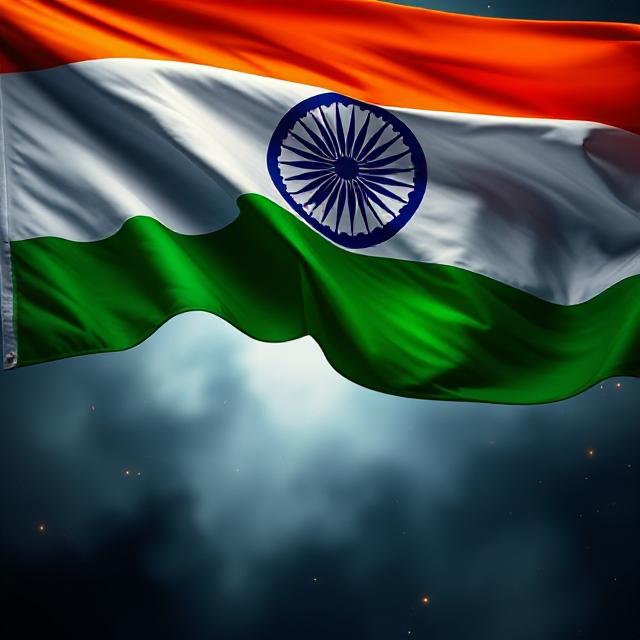Introduction
The issue of caste-based reservations in India has long been intertwined with the country’s social, political, and economic framework. Designed as a mechanism to uplift historically marginalized communities, reservations in education, employment, and political representation aim to address centuries of social exclusion and systemic discrimination.
Recently, the Maharashtra government’s decision to form caste-wise committees for reviewing reservation policies has sparked debate at multiple levels. Political leaders, including Sharad Pawar, have expressed concerns over the move, highlighting potential risks to social cohesion and the politicization of caste identities. The Times of India reported extensively on these developments, emphasizing both administrative intentions and the broader societal ramifications.
This essay provides an in-depth analysis of the formation of caste-wise reservation committees, examining their objectives, controversies, social consequences, constitutional aspects, and political implications. It also explores the balance between affirmative action and social unity in India’s pluralistic democracy.
1. Background of Reservation in India
1.1 Historical Context
- The Indian caste system, entrenched over millennia, created a rigid social hierarchy that marginalized certain communities such as Scheduled Castes (SCs), Scheduled Tribes (STs), and Other Backward Classes (OBCs).
- Post-independence, the Indian Constitution institutionalized affirmative action through reservations in educational institutions, government jobs, and legislative bodies to ensure social justice.
- The objective was to correct historical inequities, enhance social mobility, and provide marginalized communities with opportunities to participate equally in the nation’s development.
1.2 Evolution of Reservation Policies
- Initial reservations targeted SCs and STs under Articles 15(4) and 16(4) of the Constitution.
- Later, the Mandal Commission (1980s) recommended extending reservations to OBCs, further diversifying the scope of affirmative action.
- Over time, reservations became a tool not only for social justice but also for political mobilization, with various governments adjusting policies to reflect demographic, political, and economic considerations.
2. Formation of Caste-Wise Reservation Committees in Maharashtra
2.1 Objective of the Committees
- The Maharashtra government announced the creation of caste-wise committees to study and recommend changes to the reservation system.
- These committees aim to:
- Assess the current status of caste-based representation in education and employment.
- Identify communities that may require additional support or special consideration.
- Provide a data-driven approach to restructuring reservation quotas, ensuring fair allocation among multiple sub-castes.
2.2 Composition and Mandate
- Each committee is expected to include experts, bureaucrats, and representatives from various caste groups.
- Their mandate involves:
- Conducting surveys to identify socio-economic backwardness.
- Evaluating educational and employment participation levels of different castes.
- Making recommendations for reservation adjustments while respecting constitutional limits.
3. Political Reactions and Controversies
3.1 Concerns Expressed by Leaders
- Leaders like Sharad Pawar have criticized the formation of caste-wise committees, warning that such measures could intensify caste-based politics and threaten social unity.
- Critics argue that:
- Segregating communities into caste-wise committees risks reinforcing caste identities rather than promoting social integration.
- It may trigger political competition among groups, each lobbying for higher quotas or separate benefits.
- The move could divert attention from broader development goals, such as education, skill-building, and economic empowerment, which benefit all marginalized sections.
- Segregating communities into caste-wise committees risks reinforcing caste identities rather than promoting social integration.
3.2 Supportive Arguments
- Proponents contend that:
- India’s social realities necessitate detailed caste-level data to ensure equitable distribution of benefits.
- Some sub-castes within broader categories remain underrepresented despite reservations for their overarching groups.
- A structured committee approach can reduce arbitrary political decision-making, making the process more transparent and evidence-based.
- India’s social realities necessitate detailed caste-level data to ensure equitable distribution of benefits.
4. Social Implications
4.1 Risk to Social Unity
- India’s strength lies in its diverse but cohesive social fabric.
- Caste-wise committees may heighten identity consciousness, potentially leading to competition and resentment between groups.
- Communities not classified as disadvantaged may perceive the system as unfair, creating social friction.
4.2 Opportunity for Inclusion
- If implemented carefully, caste-wise committees can:
- Highlight neglected sub-castes that require additional support.
- Enable targeted interventions in education, employment, and social welfare.
- Reduce intra-caste disparities, thereby strengthening social equity.
4.3 Gender and Intersectional Dimensions
- Caste-wise focus can sometimes overlook intersectional disparities, such as those faced by women within marginalized communities.
- Effective committees should integrate gender-sensitive and intersectional analysis to ensure holistic social justice.
5. Constitutional and Legal Aspects
5.1 Articles Supporting Reservation
- Article 15(4): Empowers the state to make special provisions for advancement of socially and educationally backward classes.
- Article 16(4): Allows reservations in public employment for backward classes.
- Article 340: Provides for commissions to identify backward classes and recommend measures.
5.2 Legal Challenges
- Any restructuring of reservation quotas must adhere to the 50% ceiling rule established by the Supreme Court (Indra Sawhney case, 1992).
- Recommendations must ensure equality before law (Article 14) while addressing historical disadvantages.
- There is a potential for litigation if sub-castes perceive that their share is disproportionately reduced or neglected.
6. Politics of Identity and Reservation
6.1 Caste as a Political Tool
- Caste-based mobilization has been central to electoral politics in India.
- Reservation policies are often used as instruments to secure political support, especially in states with highly fragmented caste demographics.
- Formation of caste-wise committees may provide new avenues for lobbying and political negotiation, influencing electoral dynamics.
6.2 Balancing Justice and Politics
- While reservations serve social justice, there is a fine line between policy-driven upliftment and vote-bank politics.
- Transparent, evidence-based committees may reduce arbitrary political influence but cannot entirely remove political interests from caste-based issues.
7. Broader Societal Implications
7.1 Educational Equity
- Data-driven caste-wise reservation could improve representation in higher education, particularly for sub-castes that are underrepresented.
- By targeting scholarships and institutional seats, marginalized sub-groups can achieve greater social mobility.
7.2 Employment and Economic Opportunity
- Adjusting quotas can improve access to government jobs, ensuring that disadvantaged sub-castes gain equitable economic opportunities.
- Economic empowerment contributes to reduction in poverty and inequality, reinforcing long-term social stability.
7.3 Social Cohesion
- If handled poorly, caste-wise committees could intensify competition among groups.
- A well-structured framework, however, can balance equity with social integration, ensuring that affirmative action does not fragment society.
8. Comparative Perspectives
8.1 Other Indian States
- States like Tamil Nadu and Karnataka have historically sub-categorized reservations within OBCs to address intra-group disparities.
- Success in these states depends on transparent data collection, periodic review, and judicial oversight.
8.2 International Lessons
- Countries like South Africa and Brazil have implemented affirmative action with caste or race sub-categories, balancing equity with national integration.
- Lessons for Maharashtra include:
- Data-driven policy design
- Periodic monitoring and evaluation
- Inclusion of marginalized voices in decision-making
9. Recommendations for Effective Implementation
- Transparent Methodology: Publicly disclose criteria for sub-caste categorization and benefits allocation.
- Periodic Review: Committees should conduct regular socio-economic assessments to adjust reservations.
- Avoid Political Bias: Ensure committee independence to reduce vote-bank-driven distortions.
- Gender and Intersectional Focus: Include considerations for women, differently-abled, and other marginalized groups.
- Public Awareness: Educate citizens about the rationale behind caste-wise adjustments to prevent misinformation and social tension.
- Judicial Oversight: Maintain constitutional compliance to avoid legal challenges.
10. Conclusion
The Maharashtra government’s formation of caste-wise reservation committees represents a significant step toward data-driven and equitable policy-making. While it addresses legitimate concerns about underrepresentation of certain sub-castes, it also raises social, political, and constitutional challenges.
Key takeaways:
- Premium and underrepresented sub-castes may benefit from targeted interventions.
- Social unity is at risk if caste identities are over-politicized.
- Transparent, evidence-based processes are essential to ensure that affirmative action uplifts without dividing.
- Constitutional safeguards and judicial oversight are crucial to prevent misuse or inequitable allocation.
Ultimately, the success of caste-wise committees depends on balancing social justice with national integration, ensuring that India’s pluralistic society remains cohesive while historically marginalized communities continue to achieve progressive empowerment.




